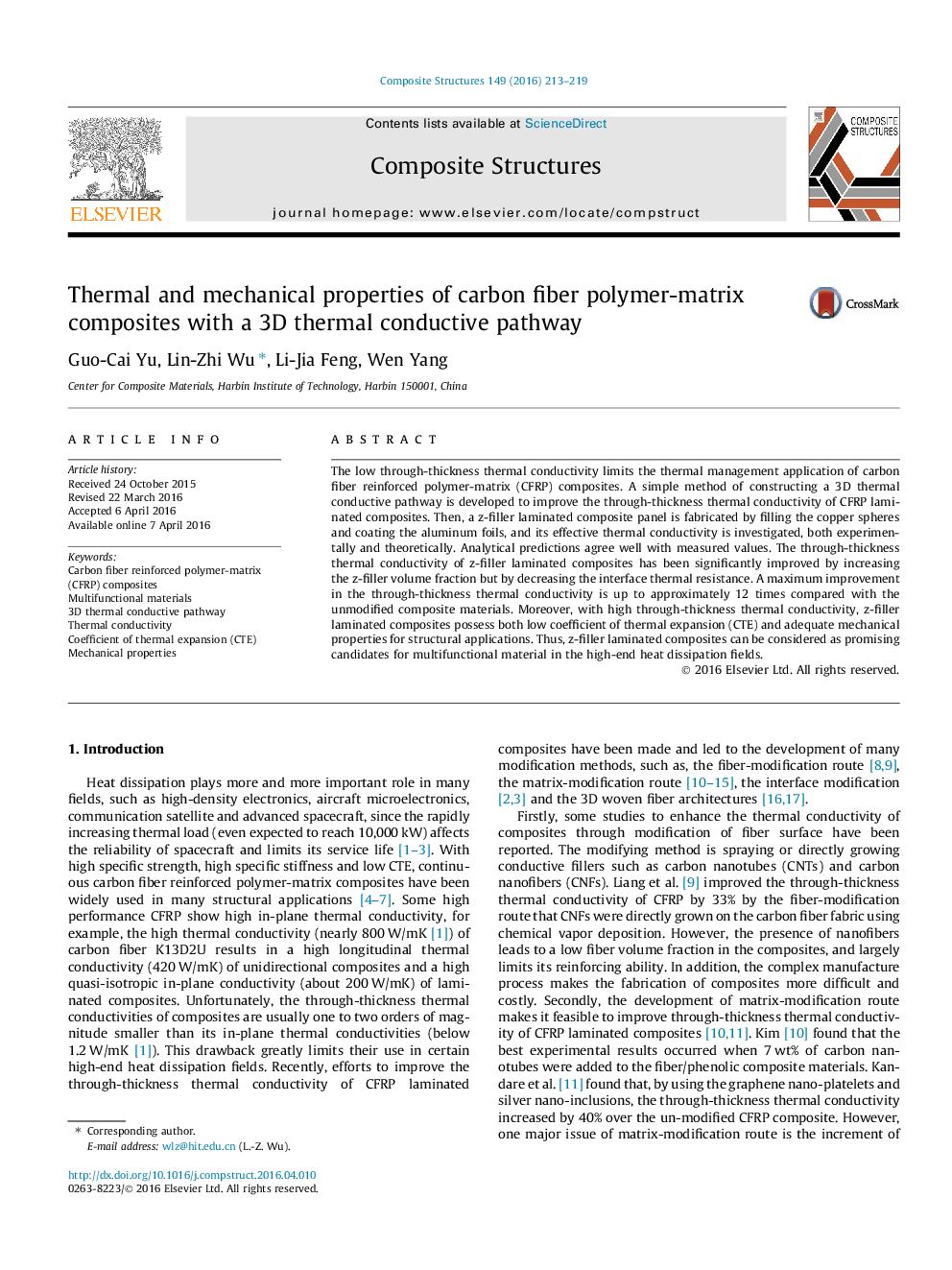| Article ID | Journal | Published Year | Pages | File Type |
|---|---|---|---|---|
| 6705601 | Composite Structures | 2016 | 7 Pages |
Abstract
The low through-thickness thermal conductivity limits the thermal management application of carbon fiber reinforced polymer-matrix (CFRP) composites. A simple method of constructing a 3D thermal conductive pathway is developed to improve the through-thickness thermal conductivity of CFRP laminated composites. Then, a z-filler laminated composite panel is fabricated by filling the copper spheres and coating the aluminum foils, and its effective thermal conductivity is investigated, both experimentally and theoretically. Analytical predictions agree well with measured values. The through-thickness thermal conductivity of z-filler laminated composites has been significantly improved by increasing the z-filler volume fraction but by decreasing the interface thermal resistance. A maximum improvement in the through-thickness thermal conductivity is up to approximately 12 times compared with the unmodified composite materials. Moreover, with high through-thickness thermal conductivity, z-filler laminated composites possess both low coefficient of thermal expansion (CTE) and adequate mechanical properties for structural applications. Thus, z-filler laminated composites can be considered as promising candidates for multifunctional material in the high-end heat dissipation fields.
Keywords
Related Topics
Physical Sciences and Engineering
Engineering
Civil and Structural Engineering
Authors
Guo-Cai Yu, Lin-Zhi Wu, Li-Jia Feng, Wen Yang,
